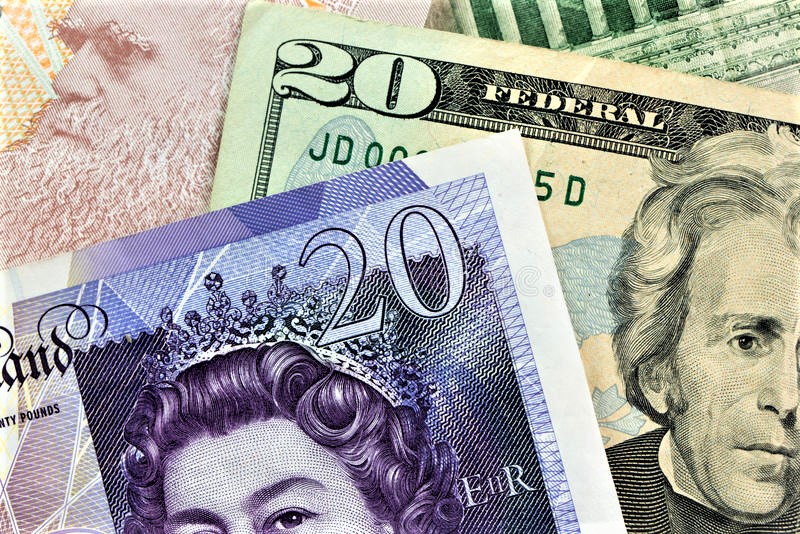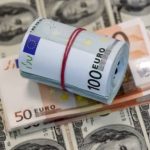Oct 13, 2022
VOT Research Desk
Market Insights and Analysis
EUR/USD
The EURUSD chart shows that the currency pair was trading in the previous days in a band around the rate of 0.97. If it is able to keep the rate above 0.97 today, we might see it climb toward the first resistance level, which is located between 0.9740 and 0.9750. However, if it was unable to keep it above that support level, we can observe a decline in price towards the following support level, which is located between 0.9640 and 0.9650.
The EUR/USD pair is trending lower right now. According to economists at Commerzbank, the euro shouldn’t start to recover until investors start betting more and more on the end of the crisis next year.
The US dollar is the preferred currency of international investors due to the determined tightening of monetary policy and the very resilient US economy. ECB rate hikes continue to trail those of the Fed.
“For the time being, downside risks still dominate with regard to the euro: The ECB’s rate hikes continue to trail the Fed’s. It is thought that the ECB is less committed to battling inflation. The euro tends to suffer as a result. The energy crisis will also continue to be a burden on the euro in the coming months.
We anticipate a rally in the EUR/USD for 2023 as the energy crisis is priced out and the growth outlook for the euro area improves. Due to the US recession, the Fed is likely to cut interest rates slightly once more, which would further narrow the gap between monetary policies.
When speaking at an event hosted by Société Générale, European Central Bank (ECB) board member Philip Lane noted that “US interest rate changes have more pronounced repercussions on the rest of the world, including the euro area,” and that the exchange rate may struggle to retain the rebound from the annual low (0.9536).
EUR/USD appears to have reversed course before failing to test the moving average as it trades to a fresh monthly low (0.9668).
As the ECB struggles to control inflation, Lane continues, “Governing Council is fully aware that further ground needs to be covered in the next several meetings to exit from the prevailing highly accommodative level of policy rates.” The board member insists that “it will be essential to closely monitor the impact of our monetary policy decisions on the different stages of the transmission mechanism,” suggesting that the central bank has little interest in implementing a restrictive policy.
Since the Federal Reserve’s September meeting minutes emphasize that “ongoing increases in the target range for the federal funds rate would be appropriate to achieve the Committee’s objectives,” and because “many participants emphasized that the cost of taking too little action to bring down inflation likely outweighed the cost of taking too much action,” developments in the United States may continue to have an impact on EUR/USD.
As a result, the US Consumer Price Index (CPI) update could have a negative impact on the EUR/USD exchange rate. The core rate is forecast to rise to 6.5% in September from 6.3% in August, and evidence of persistent inflation could fuel speculation about another 75 basis point increase in interest rates by the Federal Reserve.
In that case, as it fails to maintain the October opening range, EUR/USD may continue to trade to new monthly lows. A further decrease in the exchange rate may further exacerbate the retail mood tilt, as traders have been net-long the pair for the majority of 2022.
TRENDING ANALYTICS
While the number of traders who are net-long has increased by 7.64% from yesterday and by 10.94% from the previous week, the number of traders who are net-short has decreased by 9.93% from yesterday and by 11.72% from the previous week. 59.33% of traders were net long EUR/USD last week, which contributed to the crowding behavior. Conversely, the reduction in net short positions is due to the failure of the exchange rate to continue its trend of lower highs and lows from the previous week.
Given that the US CPI is expected to show another increase in the core reading for inflation, the range-bound price action in the EUR/USD may prove to be temporary. In addition, the exchange rate may continue to track the downward slope of the 50-Day SMA (0.9955) as it reverses course ahead of the moving average.
As it battles to hold above the 0.9910 (78.6% retracement) to 0.9950 (50% expansion) region, the EUR/USD fails to defend the opening range for October after reversing ahead of the 50-Day SMA (0.9955). The exchange rate may continue to track the negative slope in the moving average at this point.
With a break or closure below the 0.9530 (61.8% expansion) area, the Fibonacci overlap around 0.9380 (261.8% expansion) to 0.9430 (261.8% expansion) would become visible. In turn, the EUR/USD may continue to give back the recovery from the yearly low (0.9536).
The next area of interest is around the low from June 2002 (0.9303), however if the EUR/USD is unable to move above the 0.9910 (78.6% retracement) to 0.9950 (50% expansion) region, there is a possibility that it may attempt to retest the moving average once more.
Daily Moving Averages EUR/USD
|
Name |
MA5 |
MA10 |
MA20 |
MA50 |
MA100 |
MA200 |
|
EUR.USD |
0.9716 |
0.9786 |
0.9799 |
0.9955 |
1.0170 |
1.0585 |
Pivots (Fibonacci)
|
Name |
S3 |
S2 |
S1 |
Pivot Points |
R1 |
R2 |
R3 |
|
EUR/USD |
0.9636 |
0.9661 |
0.9677 |
0.9702 |
0.9727 |
0.9743 |
0.9768 |









